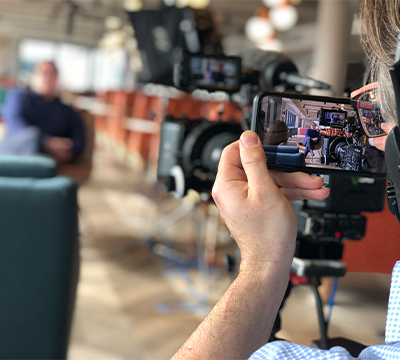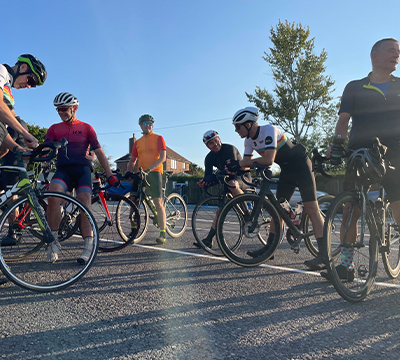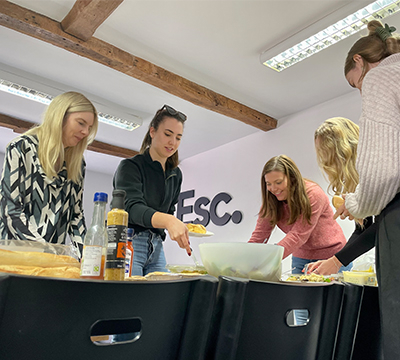
Insights How to prepare content for a new website

So you’ve done the hard bit and that’s deciding to embark on designing and developing a new website. It’s a big undertaking to do it correctly and the one bit of the entire project that is often overlooked, and left till last, is the sourcing of content to populate it. From experience, it’s worth starting this process as soon as you give the website project the ‘green light’. We’ve worked with many clients over the years to help them source, write and populate new websites and as such we’ve learnt a few things along the way. Here are our tips for making sure your content exercise goes smoothly.
1. Audience & Content mapping
You need to begin by thinking of who you are writing for, what their objectives are (when they land on your website) and what your objectives as a business are for them (e.g. to make an enquiry). All of our website projects start with an Audience Mapping exercise. Identifying who your key audiences are and what they are coming to your website for is key. We do this with our clients by sitting in a room and mapping this out on a wall with a lot of post-it notes. Once you’ve identified what and why they are visiting your website you can then start to think of the content that they will need to see in order to help them achieve their objectives.
For example; a marketing manager is viewing our website to find out about our brand identity creation experience - the best way to show this experience is through the writing of a case study.
This audience mapping exercise will naturally lead to the creation of your new website's site map, where all of the new pages will be detailed. Once you’re at this point you can then start to look at each of those individual pages and list out what content would need to go on each one.
2. Review and evaluate
Once you’ve got that aforementioned list of content for each page you then need to review what you’ve got and what you haven’t. If you’re transitioning from an old website to a new one, you may be able to copy some existing content over. If this is a case review that content and decide whether it is still right and relevant for the new website.
Where the content isn’t available - identify where it needs to come from. Does an individual in the business hold the knowledge on that particular area? If they do, then they’ll be the best person to source it from. Either ask them if they can supply the content or arrange a meeting with them to provide it to you.
This stage is crucial in the whole ‘content’ process as it’ll give you a clear picture as to how much content work needs to happen. In turn, this will give you an idea as to how long the process is going to take and whether you’ll need additional support…
3. Engage a copywriter (if required)
As is sometimes the case, you may need an extra set of hands or someone who is experienced in writing good, concise content for web. If this is the case then set to work on finding that copywriter sooner rather than later. You’ll want to give them plenty of time to get up to speed with the requirements and the kind of content you need them to write. They may well need to speak to several people at the business to source the content and then they’ll need time to shape and revise it. We have a trusted network of copywriters here at the Escape who are used to working in this way - if you need any assistance then please do give us a buzz.
4. Imagery (easily overlooked) & video
Written content is only part of the overall ‘Content’ exercise - you’ll need to think about the visual element too. Depending on the type of website you’re designing then you may need a little or a lot of imagery and/or video content. Your web-design team will take the lead on how this is going to look visually but they may well ask you for support in sourcing the right kind of visual assets.
We’re finding that video content on websites is now hugely engaging - it can tell a story quicker than an image and words and can help to boost brand presence. In an article published by Forbes, they report that including a video on a landing page can increase conversions by 80%. This is a pretty compelling stat for the consideration of ‘video’ as part of any content plan.
Now, you can either go down the commissioning of your own photography/video route or you can opt to use ‘stock’ resources. Commissioning your own often results in better, more specific and unique shots but can take time and budget to do. We’re used to working at both ends of the cost spectrum here so please feel free to pick our brains if you’re struggling with where to start.
With ‘stock’ resources, you can either go down the paid for route using either Getty or iStock or the free route using websites such as Pexels and Unsplash. Be mindful that searching for imagery and video content alone and making sure it’s consistent can be a timely exercise so make sure you allow for plenty of time to do this if this is your preferred route.
5. Compiling, organising & sign-off
You’ve started the process of gathering and writing your content and as if often the way it may need to be reviewed and approved by your internal stakeholders. Tracking changes and version control at this point in time can become a nightmare, we’ve seen it before where there are a lot of different Word documents flying around and it can become all too easy to lose sight of where you are.
Look to use an online tool such as Gather Content to streamline this process. Within this tool, you can build out the website structure and assign pages and sections to different authors for writing. You can also track when a page's content is in review and has been approved.
Once all of the content is agreed you can then start the process of populating (point 7 below).
6. SEO’ing & Imagery optimisation
A lot of people leave this till the very end and once all of the content is in the content management system (CMS). This is fine to do, but if you’re short on time it can be a mad scramble to get it all sorted and ready for go-live.
Start to think about SEO (so your page titles, meta descriptions and half-a-dozen keywords) whilst you are compiling and organising. You’ll find it easier and quicker to do at this stage as the content will already be front of mind.
An Important point to remember here - Google has increased the number of words it sees as part of the meta description so you now have between 270 and 320 words to describe the content of that specific page. Don’t waffle though, make it meaningful and importantly make sure that the SEO related to the content on the page - this is really important!
As for imagery, Google places a huge emphasis on the speed of a website and if it’s slow it will affect its ranking in search results. So, to combat this the imagery that is used needs to be ‘web’ ready and by this we mean optimised. It must be in the right format and a small file size. We use a great free website called TinyPNG to ensure that all of the images are compressed before they are uploaded to the CMS.
Once all of the imagery is on the website you can check the speed of it by using the Google Developer Speed test. This will help you to identify any pages that should be reviewed and improved.
7. Populating
Teamwork, makes the dream work. Enlist your colleagues when you get to this point or arrange to work with your web development team (this could be us!). Depending on the size of the website you should allow a minimum of two weeks to do this (maybe more!).
Experience has taught us that the best way to do this is to lock yourself away - we have a ‘War Room’ which is frequently used by our clients during this phase. It’s full of biscuits, sweets, tea and coffee and importantly is away from your day-to-day emails and phone calls meaning you can focus on populating and refining the content.
Our clients find that when they base themselves with us we can work collaboratively to finalise the content of the website. If something needs to change or you need guidance then we are literally two steps away to help in real-time.
As you can see, there’s a fair bit to consider here where it comes to content so our emphasis here is to start the exercise early and to approach it with a solid plan!
If you’d like a friendly chat or some assistance with your new website project or your content planning then please do not hesitate to give us a call; 01256 334567.
Share insight
Let's talk
- Call us +44 (0) 1256 334567
If you would like to find out more about how we can help you connect strategically, creatively or digitally, then call us or get in touch. We’d love to hear from you.

















